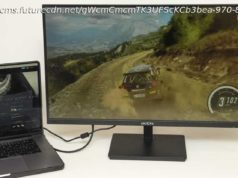It might have been a quiet one, but what launched is going to change the phone industry.
I’m sitting on the plane back from Barcelona, having just finished another marathon effort of walking around a conference center looking at new phones and the things they can do.
This is my 11th consecutive trip to Mobile World Congress, and this was one of the weirdest ones yet – and it was also oddly refreshing.
The two main topics – foldable phones and 5G – were brought up in nearly every press conference or corporate slogan in one form or another.
And yet there was an air of difference – a quieter schedule, in some ways, that allowed some key new innovations to take center stage.
MWC started in a more sedate fashion this year. At previous shows we’ve had umpteen launches from major brands packed into a crazy first couple of days, followed by a mad rush to try out all the new things launched.
This year, Sunday (the normal press conference day) felt far more measured, and there were only a few announcements on Monday morning.
The main reason for this was Samsung. The brand has an on/off relationship with MWC when it comes to device launches, and this year it decided to do its own thing the week before the expo kicked off, which gave the competition more choice in press conference times.
Samsung’s launch was around the new Galaxy S10 range, but it unveiled eight new products without having to share the spotlight with other manufacturers (those launched included the bendable Samsung Galaxy Fold that got the tech industry under the collar about this new product category).
With no Galaxy S product launch to steer clear of (no sane brand would launch a device at the same time as Samsung, for fear of nobody turning up) there was a lot more time and space for the other brands to spread their press conferences out.
One such company was Huawei, which arguably ‘won’ MWC with the flexible, 5G-enabled Mate X phone (and it took our Best in Show title in the annual TechRadar MWC awards).
If the Galaxy Fold got us all a-flutter, the Huawei Mate X generated real anticipation for the new smartphone form factor.
The difference between the Mate X and Galaxy Fold is that the latter was trapped behind a glass cabinet, where we actually got to touch the Mate X, and experience what genuinely felt like the beginning of a new wave in the smartphone revolution.
It even features an as-yet unused camera that the brand is holding back – likely to do with the fact the we’ll see something similar on the forthcoming Huawei P30.
The presence of those two phones, combined with concept devices from the likes of TCL and Energizer, showed that the foldable wave is very much on the way.
Other brands weren’t so avant garde, with Sony ‘only’ launching a raft of new smartphones, including the Sony Xperia 1 and Xperia 10 with a hyper-long display featuring a cinematic 21:9 aspect ratio.
I reviewed the LG BL40 Chocolate phone a decade ago with the same kind of long display (this was before LG really got into smartphones) and dismissed it as a luxury, novelty device, so it will be interesting to see if Sony can change that perception.
Home
United States
USA — software Foldable phones, 5G and cinematic screens: how smartphones are changing this year






